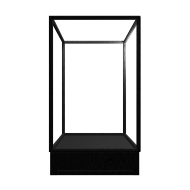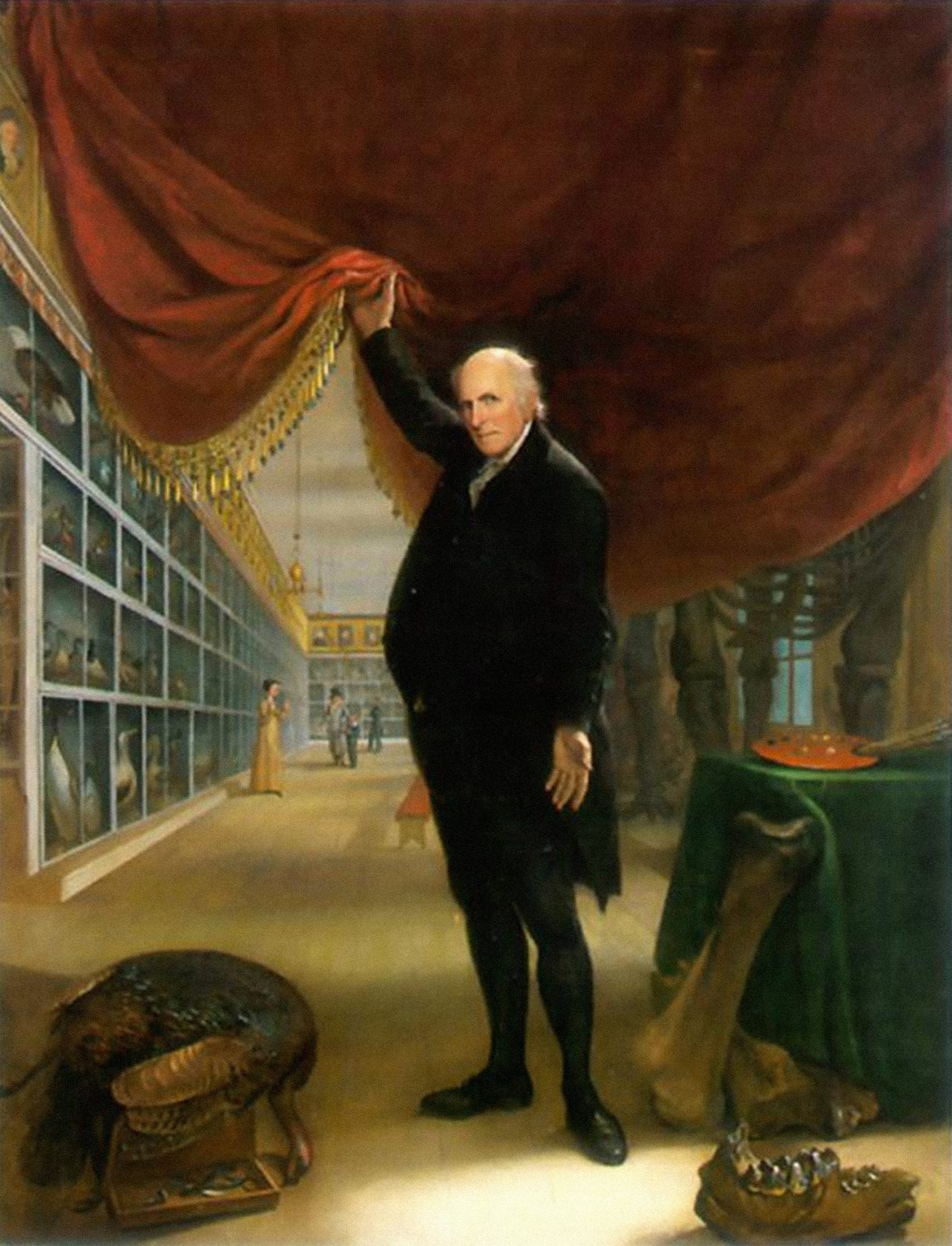Charles Wilson Peale (1741 – 1827) was an American painter, scientist, naturalist and inventor. He’s most known for his portraits, and for setting up one the first museums in the United States.
Peale’s famous self portrait, ‘The Artist in His Museum’, was painted in 1822 – Peale was 83 – and has a distinct diorama’esque quality. The monumental painting depicts the artist full scale, as if he’s standing there in real life, while holding up a velvet curtain – usually part of the backdrop for studio portraits.
This provides us a view of one of the museum galleries of Peale’s natural history museum: part of an elephant skeleton is visible on the right, while paintings of wildlife are on display on the left. The whole scene is very theatrical: coulisses, perspective, atmospheric lighting; painting techniques that contribute to a real sense of depth.
Peale himself looks directly at us. Though he seems to look up at us – his head is slightly bowed down, giving him a bit of a mischievous look – the perspective of the museum hall suggests the viewer is sitting on a chair.
Peale’s hand invites us to his museum hall, or maybe his gesture just means: “See what I did?”
The painting palet is prominently visible on the table, reflecting Peale’s work on both art and science.

Though Peale’s portraits are usually classic compositions of mostly army folk – and therefor a bit pompous – this is not the only devoid painting he did. Below is a trompe l’oeil of his two sons, ‘The Staircase Group’ from 1795. This painting is in fact part of an installation with a door frame and one steps of stairs, creating the illusion of a ‘real’ doorway (see the video at the bottom of this post for a clearer image).

Peale’s zoological museum didn’t make a distinction between the taxidermist specimens and sculptural qualities. He experimented with ‘habitat’ displays: cases with (small) mounted animals, of which the back was painted by Peale with skies or landscapes.
These cases might be the earliest example of the habitat diorama concept. (*)
He also developed new ways to mount skeletons, and paid special attention to composition in his ‘habitat’ scenes.
Peale’s museum was disassembled after his death, due to a lack of public funding. It would take decades before his groundbreaking work would become standard inventory for natural history museums.
(*) Karen Wonders, Habitat Dioramas. Illusions of Wilderness in Museums of Natural History. Acta Universitatis Upsaliensis, 1993. Page 28, 29.
Links
C.W. Peale on Wikipedia | The Artist in His Museum on Wikipedia

